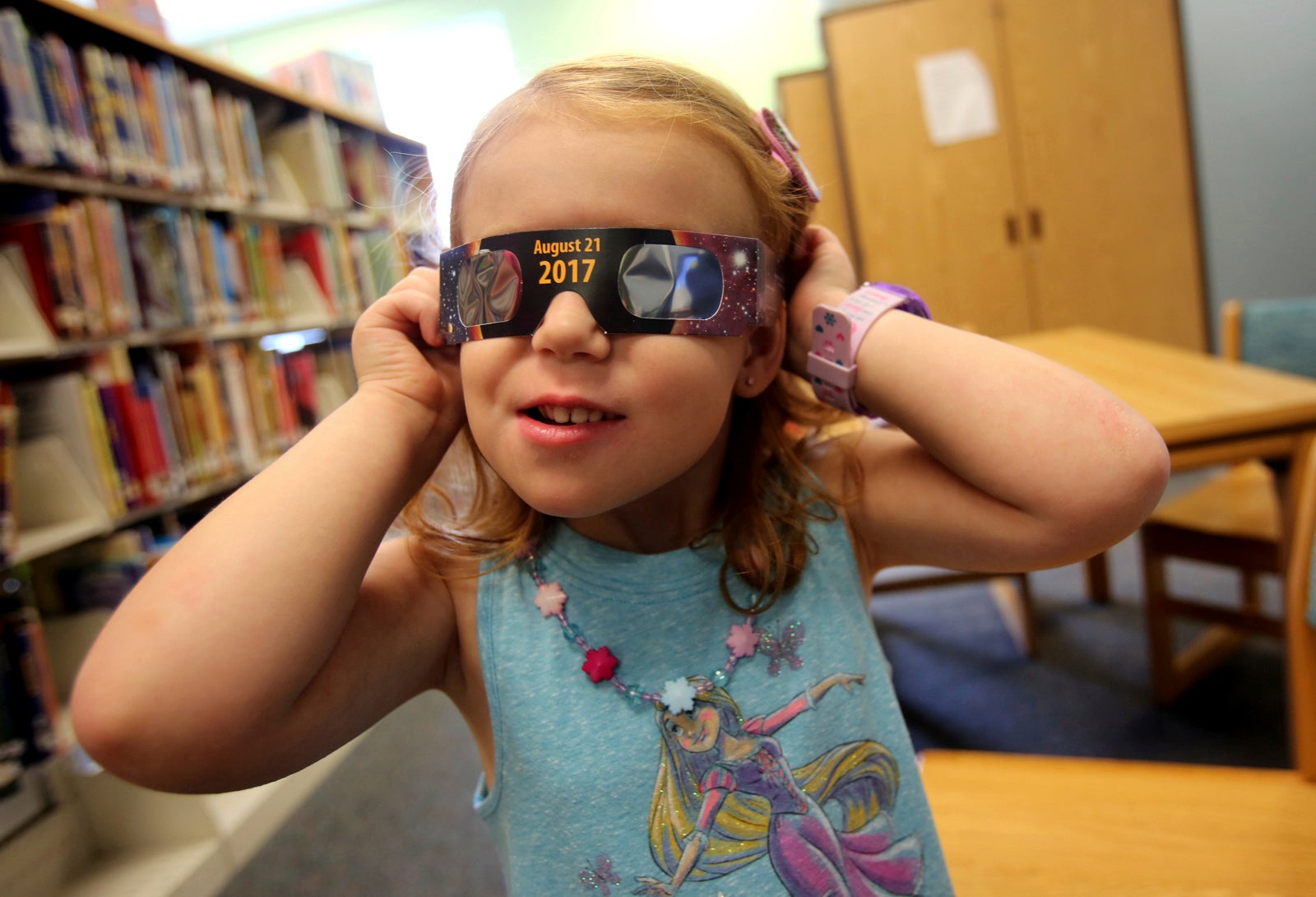Darryl Baynes: View the eclipse with care
Published 12:00 am Saturday, August 19, 2017

- n this Wednesday, Aug. 2, 2017 file photo, Emmalyn Johnson, 3, tries on her free pair of eclipse glasses at Mauney Memorial Library in Kings Mountain, N.C. Glasses are being given away at the library for free while supplies last ahead of the big event on Aug. 21. (Brittany Randolph/The Star via AP)
By Darryl Baynes
Special to the Salisbury Post
The 2017 solar eclipse is almost here, starting at 1:12 p.m. Monday.
You don’t want to miss this once-in-a-lifetime opportunity when an eclipse will be right in your own backyard. Just be sure to view the eclipse safely.
First, you should only view the eclipse — or for that matter, look at the sun — with approved viewing glasses or lenses. Do not ever look directly at the sun with your naked eye.
It may be hard to buy a pair of approved viewing glasses or lenses at this relatively late date. With that in mind, you must be careful to use only approved glasses or lenses. Anybody can stamp “approved” on cheap knockoff glasses or lenses just to get your money.
Solar eclipse viewers work by blocking transmission of IR, visible, and UV radiation. Approved glasses or lenses will allow only the very brightest light sources to be seen through them — typically, only the sun.
Regular sunglasses won’t work. Even if they are very dark, they will allow substantial UV radiation to pass through to your eyes.
Solar-grade eye protection must block at least 99.98 percent of sunlight to provide adequate protection. The sun is 93 million miles away, but even a slight unprotected glance can blind you.
You can find an approved list of vendors from the American Astronomical Society’s website, https://eclipse.aas.org/resources/solar-filters. You still have a couple of days to get the proper equipment. Don’t wait until the last minute.
You may be wondering what might happen if you look at the eclipse for just a second without glasses. If you are in the path of “totality” — that’s an area where 100 percent of the sun’s light will be blocked out, you can look directly at the eclipse during totality, but as soon as those few minutes are up and the light from the sun begins to peek around the edges of the moon, you must look away or put your protective glasses or lenses back on.
Here in Salisbury, there will be a 95.9 percent eclipse by the moon, which means no part of the eclipse should be viewed with the naked eye.
People who have looked at the sun without protection during an eclipse don’t usually notice any problems at first, but after they go to bed and wake up the next morning, they are likely to be blind. Even those who looked at partial eclipses have had crescent moon shapes of damage to their vision. Sometimes vision returns after many months, but not always.
Don’t take the chance and gamble with your eyes. This is especially true for young people who may not know better or have never been told not to look directly at the sun.
Here is an alternative for the person who wants to view the eclipse but has been too busy to get an approved pair of eclipse glasses or a viewer. The following is a link to NASA’s website where you can see how to make a pinhole eclipse viewer with a cereal box, paper and aluminum foil. It is easy and inexpensive and can be made at home. Go to https://eclipse2017.nasa.gov/how-make-pinhole-projector-view-solar-eclipse.
So the day is here, you have your eclipse viewer, lenses or glasses, and all you need now is the sun and the moon to do what they do. But wait, there are clouds in the way.
Will the eclipse still happen even if the sky is full of clouds? The answer is yes, even if the sky is covered with clouds, you will still see a wonder to behold. If there are no clouds, you will see the moon block out the light from the sun. When this happens, the sky will get noticeably darker, but you will still be able to see things around you. When it is very cloudy and an eclipse occurs, it will turn from an overcast day to night in the path of totality.
Here in Salisbury, there will be only a partial eclipse, so even if the clouds cover the sky, there should still be a little light getting through.
Darryl Lee Baynes is president and founder of Interactive Science Programs.



